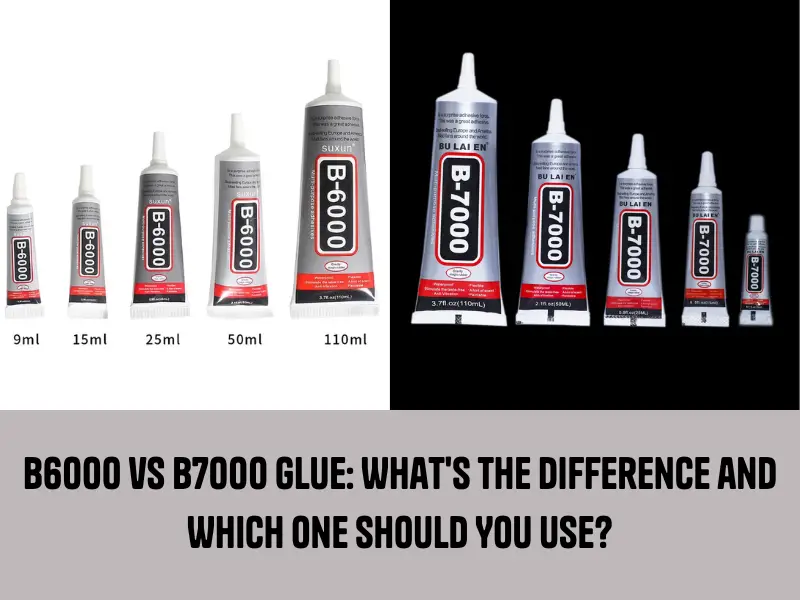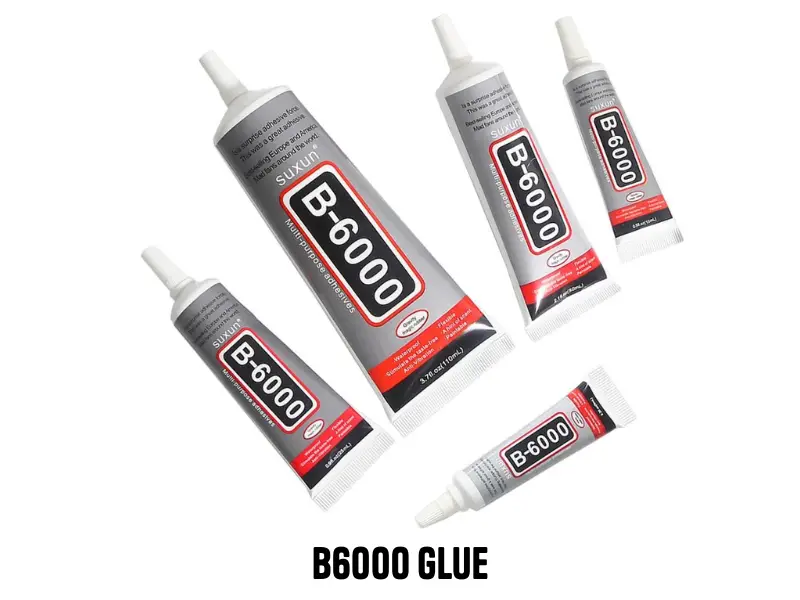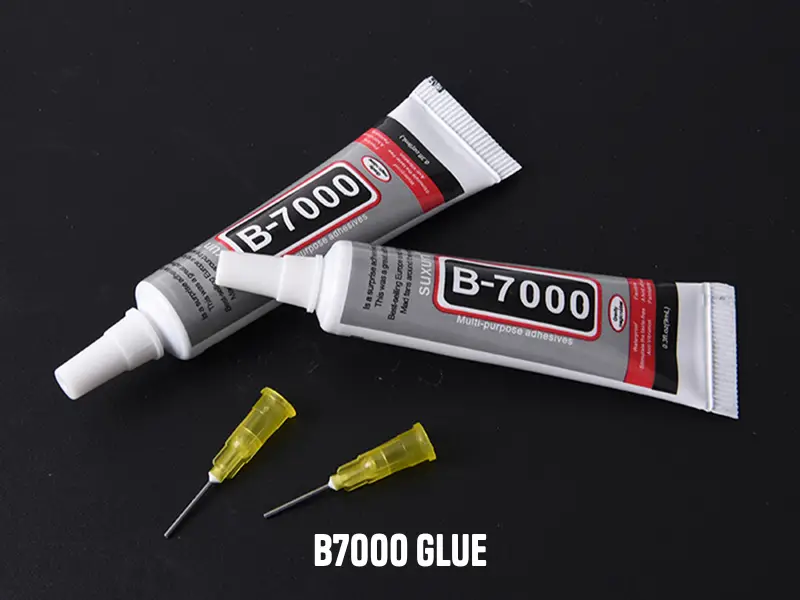B6000 and B7000 are popular adhesives used in various applications, including jewelry making, phone repairs, shoe repairs, and other DIY projects. While they may seem similar, these two adhesives have notable differences in their composition, curing time, and bonding strength.

In this article, we will explore the differences between B6000 and B7000 glue and provide you with the information you need to choose the right adhesive for your project.
B6000 Glue
B6000 is a popular industrial adhesive known for its high flexibility and strength. This glue is composed of a unique formula that includes butyl rubber, polyvinyl acetate, and other compounds.
B6000 glue has a thick consistency and dries clear, making it a popular choice for crafts, jewelry making, and phone repairs.

Composition
The primary component of B6000 glue is butyl rubber, a synthetic rubber with excellent adhesion and flexibility.
Butyl rubber is commonly used in sealants, adhesives, and coatings due to its resistance to water, chemicals, and UV radiation.
B6000 also contains polyvinyl acetate (PVA), a synthetic polymer that provides additional bonding strength and flexibility.
Curing Time
B6000 glue has a relatively slow curing time, taking anywhere from 24 to 72 hours to fully cure. However, the curing time can be accelerated by applying heat or using a curing accelerator.
It is essential to note that B6000 glue should not be exposed to water or moisture during the curing process, as this can affect its bonding strength.
Bonding Strength
B6000 glue has a high bonding strength and can be used to bond various materials, including metal, glass, plastic, and rubber.
This adhesive is known for its excellent flexibility and can withstand bending and twisting without cracking or breaking.
B7000 Glue
B7000 glue is another popular industrial adhesive known for its high bonding strength and versatility. This glue is composed of a unique formula that includes methyl methacrylate (MMA), silicone, and other compounds.
B7000 glue has a thinner consistency than B6000 glue and dries clear, making it an ideal choice for phone repairs, jewelry making, and other crafts.

Composition
The primary component of B7000 glue is methyl methacrylate (MMA), a synthetic resin with high bonding strength and durability.
MMA is commonly used in industrial adhesives, coatings, and sealants due to its excellent adhesion and resistance to heat and chemicals.
B7000 glue also contains silicone, a synthetic polymer that provides additional bonding strength and flexibility.
Curing Time
B7000 glue has a relatively fast curing time, taking anywhere from 6 to 24 hours to fully cure. However, the curing time can be affected by the temperature and humidity of the environment.
It is essential to note that B7000 glue should not be exposed to water or moisture during the curing process, as this can affect its bonding strength.
Bonding Strength
B7000 glue has a high bonding strength and can be used to bond various materials, including metal, glass, plastic, and rubber.
This adhesive is known for its excellent durability and can withstand exposure to heat, chemicals, and UV radiation without degrading or losing its bonding strength.
Differences Between B6000 and B7000 Glue
The primary differences between B6000 and B7000 glue are their composition, curing time, and bonding strength.
B6000 glue is composed of butyl rubber and PVA and has a slower curing time but excellent flexibility. B7000 glue is composed of MMA and silicone and has a faster curing time but excellent durability.
1. Viscosity
One of the most significant differences between B6000 and B7000 glue is their viscosity. B6000 has a thicker consistency than B7000 and is more difficult to apply to surfaces.
In contrast, B7000 has a thinner consistency and is easier to apply to surfaces, making it ideal for detailed work and intricate designs.
2. Temperature Resistance
Another difference between B6000 and B7000 glue is their temperature resistance. B6000 glue can withstand temperatures of up to 80 degrees Celsius (176 degrees Fahrenheit), making it suitable for indoor use.
In contrast, B7000 glue can withstand temperatures of up to 90 degrees Celsius (194 degrees Fahrenheit) and is ideal for outdoor use or applications that require exposure to heat.
3. Application
Both B6000 and B7000 glue are versatile adhesives that can be used in a wide range of applications. However, their different compositions and properties make them suitable for different types of projects.
B6000 glue is ideal for bonding flexible materials like fabric, leather, and rubber. On the other hand, B7000 glue is ideal for bonding hard materials like metal, glass, and plastic.
Related: 10 Main Types of Glue
FAQs Regarding B6000 vs B7000 glue
While B6000 and B7000 glue have some similarities, they are not interchangeable. Their different compositions and properties make them suitable for different types of applications. It is important to choose the right adhesive for your project to ensure a strong and durable bond.
Both B6000 and B7000 glue can be used to bond plastic. However, B7000 glue is better suited for hard plastics like polycarbonate and acrylic, while B6000 is better suited for soft plastics like PVC and rubber.
B6000 and B7000 glue are both permanent adhesives and are difficult to remove once they have cured. However, they can be softened using solvents like acetone or isopropyl alcohol.
Conclusion
In summary, B6000 and B7000 glue are two popular adhesives that have different compositions, curing times, and bonding strengths.
B6000 glue is composed of butyl rubber and PVA and has a slower curing time but excellent flexibility. B7000 glue is composed of MMA and silicone and has a faster curing time but excellent durability.
When choosing between B6000 and B7000 glue, consider the application, material, and environment. Both adhesives have their unique strengths and properties, and choosing the right one for your project will ensure a strong and durable bond.
